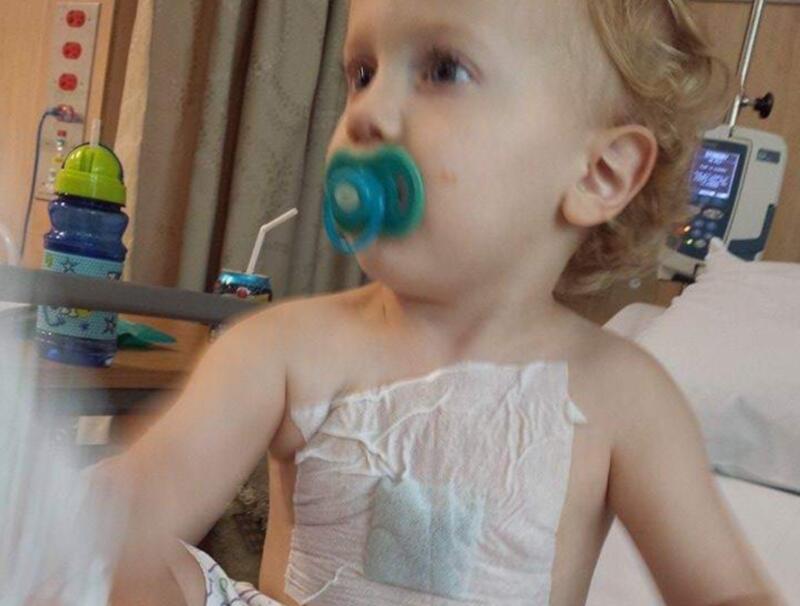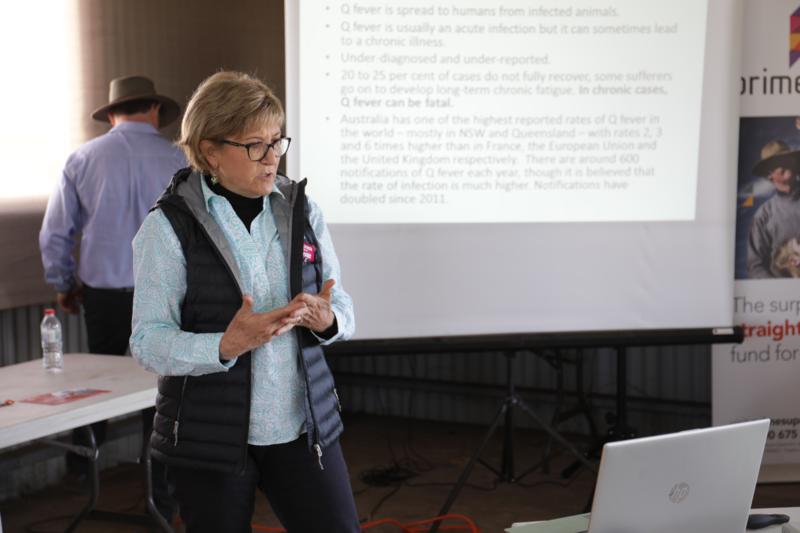IN April 2015, two-year-old Charlie Cavey was invited to a birthday party where there was a travelling petting farm. Charlie was nervous of big animals and didn’t want to touch them so his mum, Amy Sutch, carried him into the pen to watch a baby goat.
About six weeks later, Charlie developed a mysterious limp. Doctors at the Gold Coast University Hospital conducted blood tests and X-rays. “They said it was possible juvenile arthritis or synovitis [a joint inflammation] and sent us home,” Amy says.
The limp went away then reappeared and Charlie developed a lump on his chest. “He’d wake up at night screaming in pain, unable to move his leg. He wouldn’t weight-bear on it at all,” says Amy. Doctors ran tests, again diagnosed possible juvenile arthritis and sent them home to Helensvale on the Gold Coast.
The pain and limping continued. Amy kept taking Charlie back to hospital, but every time he was sent home. After 10 months, Amy was at the end of her tether. “Please help him,” she wept to doctors. Yet again she was sent home.
When his foot then swelled up that same afternoon, she called a home doctor, who said the foot must be broken. But how could it be when Charlie hadn’t walked on it for weeks? “He couldn’t move that leg at all without it bringing him to tears,” says Amy. “I took him back to hospital and said, ‘He’s two and he can’t walk. I’m not leaving till you do something.’”
An MRI revealed osteomyelitis, an infection of the bone, in his left foot and knee. Surgery was scheduled next day to clean it out.
“Afterwards an infectious diseases specialist asked me some strange questions,” Amy recalls. “Did we live on a farm? Had we visited a rural area recently? All the answers were no.”
Q fever diagnosis
About two weeks later, the specialist rang with a diagnosis: Q fever. Amy had never even heard of it. Charlie was put on long-term antibiotics in the hope it would prevent osteomyelitis flare-ups and bring his Q fever serology levels down. It didn’t.
Two weeks after that, the chest lump flared up again and Charlie needed surgery to drain it. Then he started limping on his right knee and had another operation. In all, he required 12 surgeries. He also needed a general anaesthetic each time he had an MRI. “It was distressing for all of us,” says Amy.
 Charlie after the operation on his chest. Source: Supplied.
Charlie after the operation on his chest. Source: Supplied.
Charlie has since been diagnosed with chronic recurrent multifocal Q fever osteomyelitis – a rare manifestation of the disease in children. It’s believed he caught it from the baby goat at the petting farm.
Amy is upset at the thought she carried her toddler into the pen but accepts they were simply very unlucky. “There were other children at the party who’ve had no trouble. We’re not 100% certain but the specialist said the four to five week incubation period would match it.”
Today Charlie is six and Amy doesn’t know what his future holds. His long-term antibiotics were stopped after 18 months but although he’s since had limps and back pain, anti-inflammatory medication seems to help.
“His last full body MRI showed 15 lesions, including a new one in his sacrum but they don’t cause him pain unless they flare up,” says Amy.
RELATED: Q fever battle: the boy we almost lost
Like many people who can’t get a diagnosis, Amy is frustrated that it took 10 months to find out what was wrong. Her doctor had to consult Google for information and even when Queensland Health rang because Q fever is a notifiable disease, the woman admitted she’d never heard of it.
Amy supports NSW Farmers’ call to get better training and awareness of Q fever so it can be treated quickly and easily.
“I’d do anything to prevent another family going through what we’ve endured the past three years,” she says.
.jpg) Amy today with Charlie and his sister Sophie. She says she’d do anything to prevent another family going through what they’ve endured.
Amy today with Charlie and his sister Sophie. She says she’d do anything to prevent another family going through what they’ve endured.
Q fever facts
- 3,800 Estimated cost for medical treatment for each case of Q fever diagnosed.
- 20,500 Estimated cost for medical treatment for patients with chronic Q fever.
Agricultural bodies form taskforce to fight Q fever

Pharmacist Jenni Jackson speaking about Q fever at AgQuip 2019. Jenni knows the reality of Q fever firsthand after her husband, president of the NSW Farmers’ Association, James Jackson contracted the disease in 1992.
Prominent agricultural and rural organisations have formed a taskforce to raise awareness of Q fever.
The taskforce will ask state and federal governments to sign up to a National Partnership Agreement on Q fever, which will clearly define responsibilities for managing the disease, and provide a framework for government investment.
NSW Farmers’ president James Jackson is a vocal advocate for Q fever awareness following his own battle with the disease. “Q fever is a deadly disease, and it’s the last thing a farmer needs to be dealing with during an ongoing period of drought,” he says.
“We want to see governments of all levels coming together to address this crucial public health issue. NSW has led the way on funding awareness and new vaccine research. Other states and the federal government need to step up to match this investment.”
Australian Meat Industry Council CEO Patrick Hutchinson says it needs to be clearly understood Q fever is not an occupational disease and is not restricted to any one industry.
“Q fever is a community health issue that can affect every person, young or old,” he says.
“The Q fever taskforce has been established to highlight the scale of the disease and the need to raise its awareness across Australia to businesses, governments, the medical fraternity and the general community.”
The taskforce also aims to have all tests and vaccination details added to the Australian Immunisation Register, to ask the federal government to reintroduce funding for the National Q Fever Management Program, and to secure funding for research for an improved vaccine.
A petition to the House of Representatives organised by The Farmer and NSW Farmers in February garnered more than 1,000 signatures.
Taskforce members